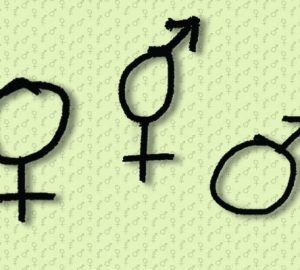Warrior Woman of the Week: Coretta Scott King
Coretta Scott King embodied everything a women could be while fighting for race and gender equal rights.
Coretta Scott King was a trailblazer for the civil rights movement and the women’s rights movement during the second wave of feminism. As the wife of Martin Luther King Jr., she was a dedicated wife and mother while also fighting for the rights of women of all races.
During the second wave of feminism, a divide formed. The initially united force of women broke in half to create two separate ideological movements: equal rights feminism and radical feminism. In 1963, feminist writer Betty Friedan, wrote “The Feminine Mystique.” This nonfiction book pushed the second wave of feminism into a full scale movement. Friedan wrote and published the book at a time that most American women were dropping out of college to get married and leaving their degrees and dreams to run a household. This was the social norm of the time, and culturally there weren’t many other options acceptable for young girls. Yet Friedan, instead of getting married and dropping her degree, wrote a book. According to the book’s 50th anniversary description, it “gave a pitch-perfect description of the problem that ‘has no name:’ the insidious beliefs and institutions that undermine women’s confidence in their intellectual capabilities and kept them in the home.” Although, what about the women such as King who were mothers and activists?
The book was published in the same time period that the separation of the movement took place. Also right around this time, King was tasked with mothering four children. Yet, she chose to accompany her husband to events and protests, becoming a irreplaceable part of the civil rights movement. According to Stanford University, she held a “critical role in many of the civil rights campaigns of the 1950s and 1960s, performing in freedom concerts that included poetry recitation, singing, and lectures related to the history of the civil rights movement.”
In 1959, the couple traveled to India and King was overwhelmingly affected by the women she interacted with there. “As we traveled through the land, we were greatly impressed by the part women played in the political life of India, far more than in our own country,” she said. By 1962, she traveled to Geneva, Switzerland, to serve as a “Women’s Strike for Peace” delegate to the 17-nation Disarmament Conference.
King’s fight for race and gender equality continued in 1966 when she helped found the National Organization for Women (NOW). According to the King Center, “in 1974, Mrs. King formed a broad coalition of over 100 religious, labor, business, civil and women’s rights organizations dedicated to a national policy of full employment and equal economic opportunity.” She formed the Coalition of Consciousnesses consisting of over 800 human rights organizations and in 1990 served as the co-convener of the Soviet-American Women’s Summit in D.C.
King embodied everything a women could be while fighting for race and gender equal rights, following her dream, earning a degree, and living a happy life as a wife and mother. Following the second wave, we often, intentionally or unintentionally, separate the women who were happily married with kids from the feminists. Yet, King proves this isn’t the case. Feminism fights for women to have the same rights men do. It is a fight for equality and equality means women have the right to chose to be wives and mothers without being anti-feminist. Every woman is included in feminism, not just the ones who reject traditional female roles, such as Friedan. The feminist movement isn’t fighting to end marriage or motherhood, it’s fighting for the right to have equal opportunities with men when pursuing whatever it is that makes you happy.
Tags :
civil rightscivil rights movementcoretta Scott kingfemale empowermentfeminismmovementswarrior woman of the weekwomen's empowermentwomen's rights





























